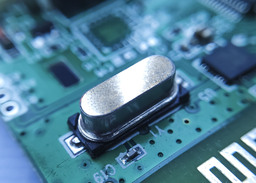Resonant Torque Differential Magnetometry with High Frequency Quantum Oscillators
TECHNOLOGY NUMBER: 2022-149

OVERVIEW
High frequency (Mhz) magnetometer utilizing commercial off-the-shelf components- Improved resolution for magnetic force magnetometry
- Ultra-short time response for fault detection applications
BACKGROUND
Sensitive magnetometry refers to the measurement and detection of very weak magnetic fields with high precision and sensitivity. This field has diverse applications in various scientific and technological domains. Sensitive magnetometry can therefore act as a powerful probe to the research and development of solid state quantum materials and devices. Cantilever-based magnetometry is frequently offered as an additional capability of certain atomic force microscopes (AFMs). Currently, all such magnetometers utilize kHz oscillation of the magnetic probe. As such, a need exists for improved magnetometer design and function.
INNOVATION
Researchers at the University of Michigan have developed a high frequency (MHz) magnetometer that incorporates off-the-shelf quartz crystal resonators frequently used in smartphones and many other electronic devices. The resonance of quartz crystals has been ubiquitously utilized for years as a stable frequency references for computers chips. The large Q factor (sharpness of the frequency peak) and widespread availability of quartz crystal resonators make them an attractive alternative for the development of magnetometer systems.
Utilizing an asymmetric mounting method, the inventors have developed a resonant torque differential magnetometer that can perform as either a high frequency magnetometer or a highly sensitive magnetic susceptibility measurement instrument for nearly any solid material, magnetic or not. The potential benefits of this approach include better spatial resolution and/or enhanced vertical resolution. The faster oscillation could also optimize other magnetometer applications, such as "very fast fault detection", where dramatic changes in current and/or magnetic field (e.g. 100T change in a few ms) need to be more rapidly detected.